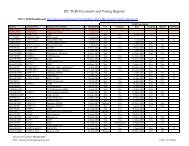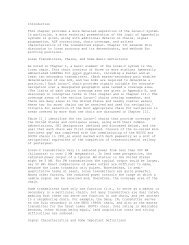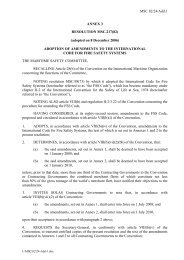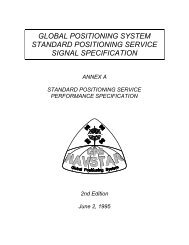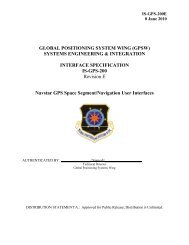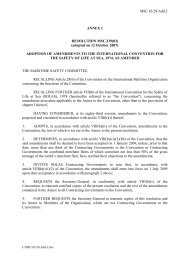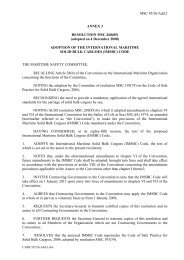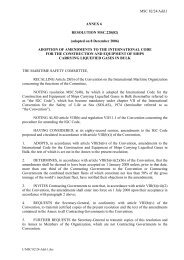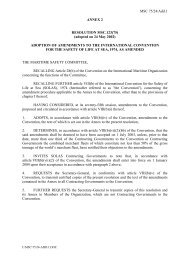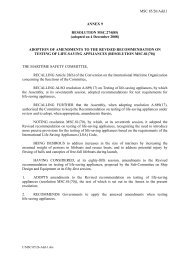IS-GPS-800A - US Coast Guard Navigation Center
IS-GPS-800A - US Coast Guard Navigation Center
IS-GPS-800A - US Coast Guard Navigation Center
Create successful ePaper yourself
Turn your PDF publications into a flip-book with our unique Google optimized e-Paper software.
3. SIGNAL REQUIREMENTSThe requirements specified in this section define the requisite characteristics of the SS/<strong>US</strong> interface for the <strong>GPS</strong> L1Csignal.3.1 Signal StructureThe <strong>GPS</strong> SV typically transmits multiple distinct signals modulated on the L1 RF carrier. The signals include C/A,P(Y), M, and L1C which are modulated on the carrier frequency. The L1C signal defined in this <strong>IS</strong> consists of twomain components; one denoted L1C P to represent a pilot signal, without any data message, that is spread by aranging code, and L1C D that is spread by a ranging code and modulated by a data message. The L1C P is alsomodulated by an SV unique overlay code, L1C O .The L1C P and L1C D components are transmitted using ranging codes defined in Section 3.2.2. The SVs shalltransmit intentionally "incorrect" versions of the respective ranging codes as needed to protect users from receivingand utilizing anomalous signals. These "incorrect" codes are termed non-standard L1C P (NSCP) and non-standardL1C D (NSCD). Non-standard codes are not for utilization by the users and, therefore, are not defined in thisdocument.The data message on L1C D , denoted D L1C (t), includes SV ephemerides, system time, system time offsets, SV clockbehavior, status messages, and other data messages. The message structure and data encoding techniques aredefined in Section 3.2.3.The L1C D signal is modulated on the L1 RF carrier using a Binary Offset Carrier (BOC) (1, 1) modulationtechnique. The L1C P signal is modulated on the L1 RF carrier using a Time-Multiplexed BOC (TMBOC)modulation technique. The TMBOC technique utilized by L1C P signal uses a combination of BOC (1, 1) and BOC(6, 1) modulation as described in Section 3.3.3.2 Signal Definition3.2.1 Signal CharacteristicsThe following specifies the characteristics and quality of the L1C signal.3.2.1.1 Frequency PlanThe carrier frequency for the L1C signal shall be coherently derived from a frequency source common with othersignals within the SV. The nominal frequency of this source as it appears to an observer on the ground is 10.23MHz. The SV carrier frequency and clock rates, as they would appear to an observer located in the SV, are offset tocompensate for relativistic effects. The clock rates are offset by f/f = -4.4647E-10, which is equivalent to achange in the L1C-code chipping rate of 1.023 MHz by a f = -4.5674E-4 Hz. This results in an offset L1C-code3 <strong>IS</strong>-<strong>GPS</strong>-<strong>800A</strong>8 June 2010




